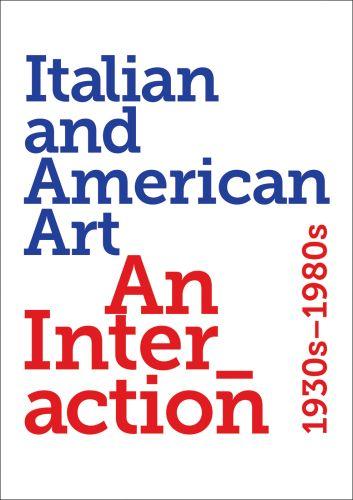
8 The Changing Circumstances of Human Life and the Role of Culture
Massimiliano Belingheri
10 The BFF Collection: Spanning Europe and America
Maria Alicata
17 The Interaction and Fascination between Italian and American Art, 1930s–1980s
Renato Miracco
170 Bibliography
Fortunato Depero
Nove teste con cappello, c. 1927-28
Colored fabric mosaic
47 × 46 cm
Private collection
> Giacomo Balla
Progetto scenico per “Sintesi futuriste”, 1915-25
Lithography
69 × 49 cm
BFF COLLECTION

pursued cultural diplomacy right up until the country’s entry in the Second World War. The promotion was carried out by subsidizing the initiatives of private galleries and later organizing events and fairs, such as the 1935 “Contemporary Italian Painting” exhibit curated by Dario Sabatello, which traveled across the United States for more than a year, inaugurating what was to become the standard circuit for subsequent Italian exhibitions (New York; Boston; Chicago; Washington, DC; and San Francisco).
In his essay in the exhibition catalogue, American art critic and collector Christian Brinton, once described as “a modernist icon,” made a point of referring to the “new Italian Renaissance in the arts,” thus coining an expression that recurs, often inappropriately, at least until 1950.
Another place to promote Italian art in the US, and in New York in particular, was the Comet Gallery, a commercial exhibition space inaugurated in December 1937 and dedicated exclusively to contemporary Italian art. Located at 10 East 52nd Street in Manhattan, the Comet was the American branch of the Galleria della Cometa, which had opened in Rome in 1935. While the Roman
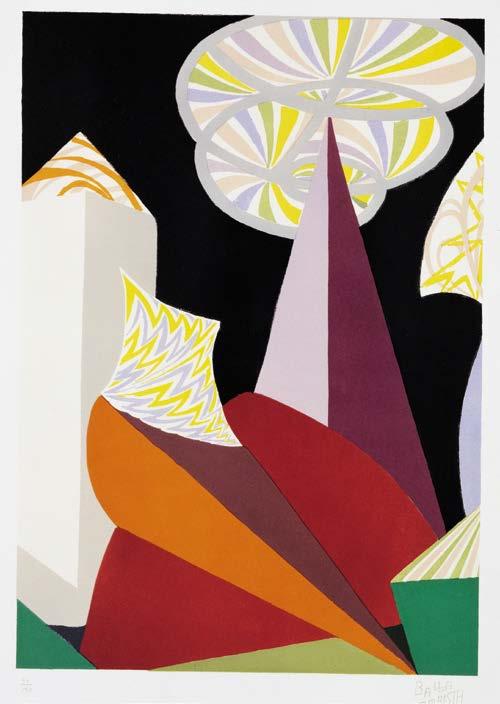
Lucio Fontana
Studi per soffitto spaziale per la IX
Triennale di Milano, 1951
Ballpoint on paper
28 × 20 cm
BFF COLLECTION
> Lucio Fontana
Studi per architettura d’interni, 1950–60s India ink on paper
21.5 × 27.5 cm
BFF COLLECTION

particles transmit a concrete and synchronic manifestation of the space-time continuum to the canvas. That said, Fontana was an artist who not only believed in Futurism, but declared himself to be a neoFuturist, claiming that Futurism was the most important of the modern avant-gardes. This revolutionary blending of art took clear shape in Ambiente spaziale in luce nera (Spatial Environment in Black Light), which was presented at Galleria del Naviglio in 1949: “Neither a painting nor a sculpture, a bright shape in space the emotional freedom of the viewer.”30 This work was undoubtedly a forerunner of, and a powerful influence on, the environmental art of European and Italian artists of

the 1960s and 1970s, such as Gruppo T (where T stands for time), which was founded in Milan in 1959, or the Zero Group, a German group that explored the skewing of visual perceptions. The latter also influenced the Italian artist Piero Dorazio, as will be seen below.
In the ensuing years, ranging from 1958 to 1968, Fontana concentrated on his Buchi (Holes) series, in which he took to puncturing the canvas with an awl. Unlike in American abstract art for instance Pollock (as we shall see below) Fontana’s approach is never instinctive, but rather the fruit of carefully considered, rational reflection. “The idea is what counts. It takes just a cut,” Fontana would say, implying that this was no impulsive action, but a studied gesture, the better to use the changing light as a means of expression and as a way of exploring the infinite.
“Today, experimental understanding has replaced imaginative understanding. We know about a world that exists and expresses itself on its own and cannot be changed by our ideas. [. . .] Painting, sculpture, poetry, and music need to be transcended. We need a greater art in tune with the requirements of the new spirit.”31
Jackson Pollock
Alchemy, 1947
Oil, aluminum, alkyd enamel paint with sand, pebbles, fibers, broken wooden sticks on canvas
114.6 × 221.3 cm
Peggy Guggenheim Collection, Venice


26 × 17.5 × 5 cm
BFF COLLECTION

BFF COLLECTION
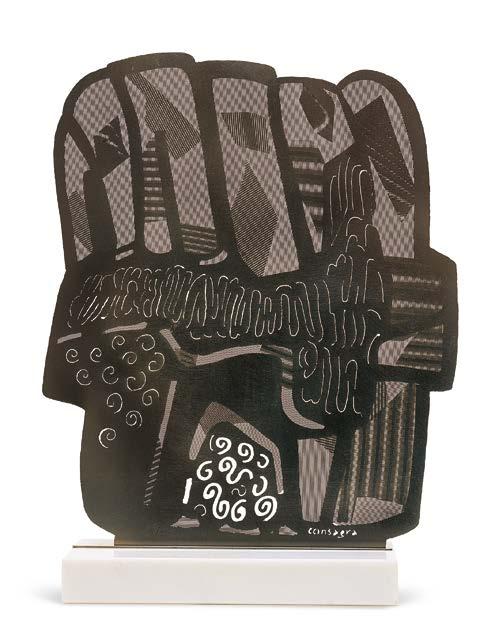
Gianfranco Pardi
Architettura T194, 1973
Canvas, acrylic and cables
50 × 300 cm
BFF COLLECTION

> Gianfranco Pardi
Architettura, 1974
Silkscreen print
50 × 70 cm
BFF COLLECTION

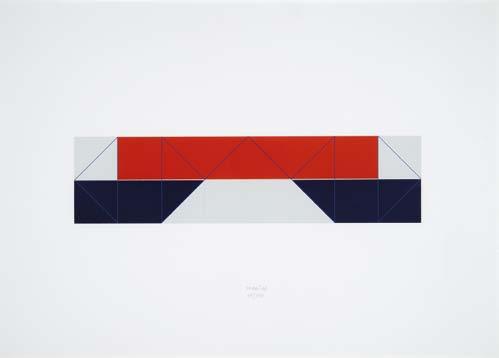

One of the characteristics of a comic strip is that it expresses a passion and a violent emotion in an entirely mechanical, detached manner. Expressing it in paint would mean diluting it.
Roy Lichtenstein

Roy Lichtenstein Spray, 1962
Acrylic on canvas
91.5 × 173.5 cm
Staatsgalerie Stuttgart, Stuttgart
Mario Schifano Futurismo rivisitato–Balla, 1965–66
Enamel and collage on cardboard
69.7 × 99.7 cm
Private collection

Mario Schifano Futurismo rivisitato, 1966
Spray and enamel on canvas and perspex
100 × 173 cm
Private collection

Adami L’Engadine, 1973
51 × 71.5 cm
BFF COLLECTION

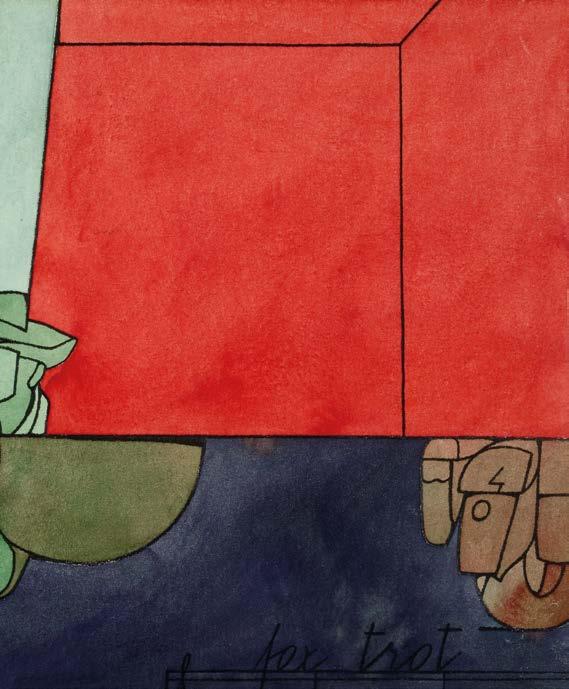
Bruno Munari
Senza titolo, 1989–90
Bend and cut iron plates
24.5 × 51 × 5 cm
BFF COLLECTION

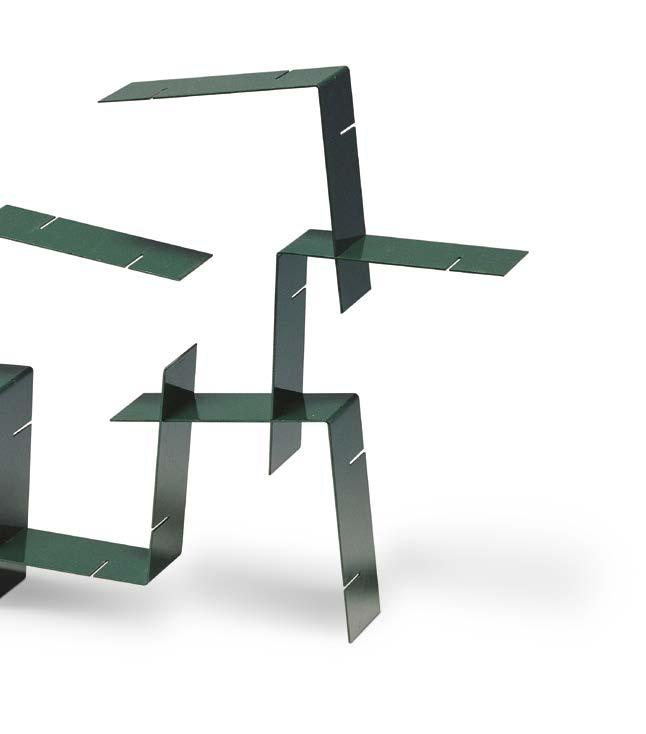
5 Continents Editions
Editor-in-Chief
Aldo Carioli
Design and Art Direction
Stefano Montagnana
Modern and Contemporary Art Editor
Antonella Trotta
Editor
Lucia Moretti
Translated from Italian by Julian Comoy
Editing and Proofreading
Charles Gute
Image Research
Chiara Cottone
Pre-press
Maurizio Brivio, Milan, Italy
All rights reserved © BFF Bank S.p.A.
© The Authors for their texts
For the present edition © 2023 – 5 Continents Editions S.r.l., Milan, Italy
No part of this book may be reproduced or utilized in any form or by any means, electronic or mechanical, including photocopying, recording, or any information storage and retrieval system, without permission in writing from the publisher.
5 Continents Editions
Piazza Caiazzo 1 20124 Milan, Italy www.fivecontinentseditions.com
ISBN 979-12-5460-053-5
Distributed by ACC Art Books throughout the world, excluding Italy. Distributed in Italy and Switzerland by Messaggerie Libri S.p.A.
Printed and bound in Italy in October 2023 by Tecnostampa – Pigini Group Printing Divion Loreto – Trevi for 5 Continents Editions, Milan
This volume is part of the BFF Banking Group’s project dedicated to the promotion of Italian contemporary art. The initiative originates from a sense of responsibility toward the community and to Italian cultural heritage, and from a desire to give back to society part of the value that the BFF Banking Group generates, in keeping with its social and sustainability policies. The entire BFF collection of about 250 works from the post-war period to the early 2000s is permanently on display at BFF’s Italian headquarters.
Thanks to
Alessia Barrera
Sabina Bernard
Greta and Andrea Biasca Caroni
Liliana Cherubin
Clemente Contestabile
Sofia Crosta
Eleonora Del Federico
Justin Dorazio
Giuditta Giorgio
Maria Gliozzi
Gianluca Lopes
Joel Melchiori
Gabriele Romani
Archivio Mario Ceroli, Rome
Archivio Pietro Consagra, Milan
Archivio Depero, Rome
Archivio Piero Dorazio, Milan
Archivio Luigi Pericle, Ascona
Biblioteca Universitaria di Pavia
Fast Forward Foundation–Philanthropic Entity
Fondazione Marconi, Milan
Lucio Isolani Study Archive, Pratt Institute, New York
National Gallery of Art, Washington, DC
Pecci Blunt Archive, Rome
Cy Twombly Foundation, Rome
